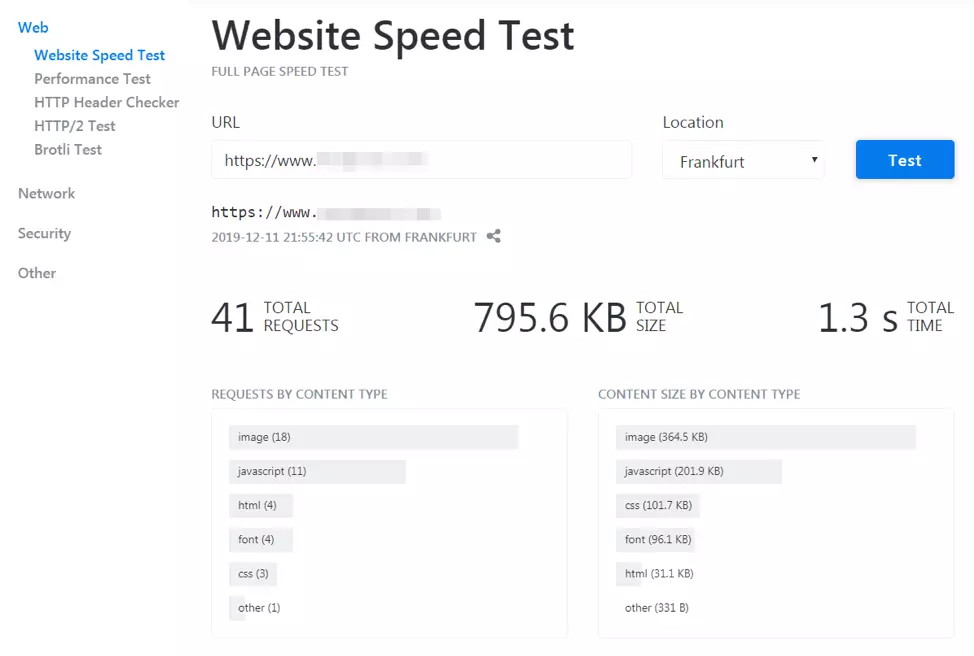4 Reasons to Use Image Processing to Optimize Website Media
Feb 15, 2025 am 08:38 AM
Key Takeaways: Optimizing website images is crucial for performance. Image processing tools and CDNs streamline this, converting images to formats like WebP, delivering scaled images, maximizing server resources, and providing precise compression for faster loading. KeyCDN's image processing offers real-time delivery, boosting speed and setting your site apart. Regardless of your website's focus, using CDNs for image processing significantly improves media delivery and user experience.
(This sponsored article is brought to you by our content partner, KeyCDN. Thank you for supporting the partners who make SitePoint possible.)
Website performance hinges heavily on image optimization. Simply managing file size isn't enough; true optimization requires a multi-faceted approach. Fortunately, image processing tools and Content Delivery Networks (CDNs) simplify this complex task, saving time and resources while addressing multiple optimization aspects. This article explores image optimization's impact on site performance, standard and advanced techniques, and the benefits of image processing.
Why Neglecting Image Optimization Hurts Performance: Unoptimized images significantly slow down your website. Optimization removes unnecessary data, lightening the load. Use online tools to assess your website's performance and identify bottlenecks.

Addressing image optimization involves several strategies:
- Choosing the Right Image Format: JPEGs are ideal for photos, while PNGs generally outperform GIFs for graphics. Google's WebP offers compelling advantages (discussed below).
- Optimizing Compression: Balance file size reduction with quality retention. Lossy compression reduces file size but sacrifices some quality, while lossless compression maintains quality but results in larger files.
- Pre-sizing Images: Provide images in various sizes to avoid on-the-fly resizing, which impacts loading speed.
- Leveraging CDNs: CDNs efficiently manage media files, delivering optimized images based on user location and device.
While these traditional methods are helpful, they aren't the only solutions.
Four Reasons to Use Image Processing for Media Optimization: KeyCDN's image processing offers real-time processing and delivery, adapting to user needs. Here's why it's effective:
-
Advanced Format Conversion (WebP): WebP, Google's modern image format, supports lossy and lossless compression and transparency, resulting in significantly smaller files than PNGs (up to 26% smaller for lossless) and JPGs (up to 77% smaller according to KeyCDN studies). KeyCDN's WebP conversion and caching features simplify implementation.

-
Delivery of Scaled Images: KeyCDN delivers scaled images in real-time, optimizing for various screen sizes and improving loading speeds.
-
Maximizing Server Resources: CDNs offload image delivery, freeing up your server to handle dynamic requests and reducing latency.
-
Accurate Compression Rates: CDNs allow setting specific compression rates based on parameters, ensuring optimal image delivery without slowing down your website. You can choose between lossy and lossless compression based on your needs.
Query strings enable further customization. For example:
https://ip.keycdn.com/example.jpg?blur=5 (Blur effect)
https://ip.keycdn.com/example.jpg?sharpen=10 (Sharpen effect)


CDNs offer extensive parameter options for flexible image display.
Getting Started with Image Processing: Services like KeyCDN are easy to integrate. Pricing is based on usage (calls to the CDN). Create a KeyCDN account, set up a "Pull Zone" (specifying your origin server), enable Image Processing, and verify asset accessibility. For files larger than 100 MB, "Push Zones" are recommended. Consult your host's documentation for integration instructions.
Conclusion: Image processing via CDNs significantly enhances optimization, offering real-time content delivery, improved speed, and a competitive advantage. KeyCDN's features—advanced format conversion, dynamic scaling, server resource optimization, and precise compression—elevate media delivery and user experience.
Frequently Asked Questions: (The provided FAQs are already well-written and comprehensive. No changes needed.)
The above is the detailed content of 4 Reasons to Use Image Processing to Optimize Website Media. For more information, please follow other related articles on the PHP Chinese website!

Hot AI Tools

Undress AI Tool
Undress images for free

Undresser.AI Undress
AI-powered app for creating realistic nude photos

AI Clothes Remover
Online AI tool for removing clothes from photos.

Clothoff.io
AI clothes remover

Video Face Swap
Swap faces in any video effortlessly with our completely free AI face swap tool!

Hot Article

Hot Tools

Notepad++7.3.1
Easy-to-use and free code editor

SublimeText3 Chinese version
Chinese version, very easy to use

Zend Studio 13.0.1
Powerful PHP integrated development environment

Dreamweaver CS6
Visual web development tools

SublimeText3 Mac version
God-level code editing software (SublimeText3)

Hot Topics
 The Developer's Shortcut To Your Udemy-like Platform
Jun 17, 2025 pm 04:43 PM
The Developer's Shortcut To Your Udemy-like Platform
Jun 17, 2025 pm 04:43 PM
When developing learning platforms similar to Udemy, the focus isn't only on content quality. Just as important is how that content is delivered. This is because modern educational platforms rely on media that is accessible, fast, and easy to digest.
 Cost Effective Reseller Platforms for Buying SSL Certificates
Jun 25, 2025 am 08:28 AM
Cost Effective Reseller Platforms for Buying SSL Certificates
Jun 25, 2025 am 08:28 AM
In a world where online trust is non-negotiable, SSL certificates have become essential for every website. The market size of SSL certification was valued at USD 5.6 Billion in 2024 and is still growing strongly, fueled by surging e-commerce business
 5 Best Payment Gateways for SaaS: Your Ultimate Guide
Jun 29, 2025 am 08:28 AM
5 Best Payment Gateways for SaaS: Your Ultimate Guide
Jun 29, 2025 am 08:28 AM
A payment gateway is a crucial component of the payment process, enabling businesses to accept payments online. It acts as a bridge between the customer and the merchant, securely transferring payment information and facilitating transactions. For
 New study claims AI 'understands' emotion better than us — especially in emotionally charged situations
Jul 03, 2025 pm 05:48 PM
New study claims AI 'understands' emotion better than us — especially in emotionally charged situations
Jul 03, 2025 pm 05:48 PM
In what seems like yet another setback for a domain where we believed humans would always surpass machines, researchers now propose that AI comprehends emotions better than we do.Researchers have discovered that artificial intelligence demonstrates a
 Hurricanes and sandstorms can be forecast 5,000 times faster thanks to new Microsoft AI model
Jul 05, 2025 am 12:44 AM
Hurricanes and sandstorms can be forecast 5,000 times faster thanks to new Microsoft AI model
Jul 05, 2025 am 12:44 AM
A new artificial intelligence (AI) model has demonstrated the ability to predict major weather events more quickly and with greater precision than several of the most widely used global forecasting systems.This model, named Aurora, has been trained u
 Your devices feed AI assistants and harvest personal data even if they’re asleep. Here's how to know what you're sharing.
Jul 05, 2025 am 01:12 AM
Your devices feed AI assistants and harvest personal data even if they’re asleep. Here's how to know what you're sharing.
Jul 05, 2025 am 01:12 AM
Like it or not, artificial intelligence has become part of daily life. Many devices — including electric razors and toothbrushes — have become AI-powered," using machine learning algorithms to track how a person uses the device, how the devi
 Would outsourcing everything to AI cost us our ability to think for ourselves?
Jul 03, 2025 pm 05:47 PM
Would outsourcing everything to AI cost us our ability to think for ourselves?
Jul 03, 2025 pm 05:47 PM
Artificial intelligence (AI) began as a quest to simulate the human brain.Is it now in the process of transforming the human brain's role in daily life?The Industrial Revolution reduced reliance on manual labor. As someone who researches the applicat
 Advanced AI models generate up to 50 times more CO₂ emissions than more common LLMs when answering the same questions
Jul 06, 2025 am 12:37 AM
Advanced AI models generate up to 50 times more CO₂ emissions than more common LLMs when answering the same questions
Jul 06, 2025 am 12:37 AM
The more precisely we attempt to make AI models function, the greater their carbon emissions become — with certain prompts generating up to 50 times more carbon dioxide than others, according to a recent study.Reasoning models like Anthropic's Claude







